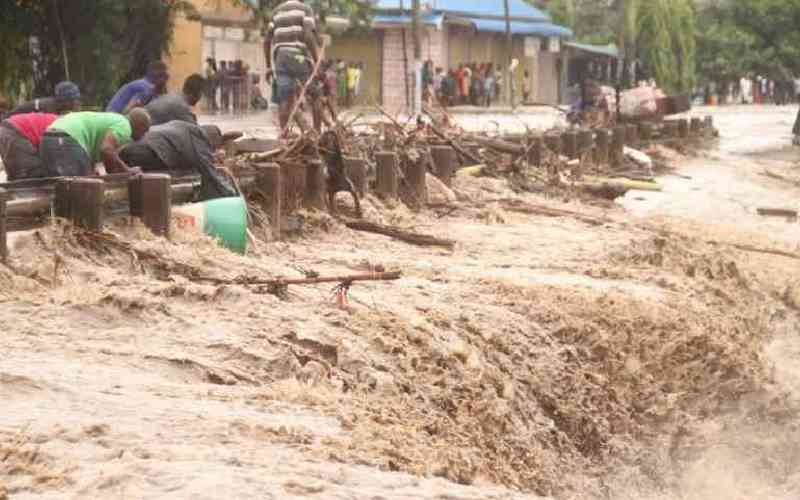Writer Erick Wamanji sneaks off to Dar-es-Salaam, Tanzania, in search of the town of slavery. He finds an emotive outpost and surrenders his soul to the seductive charm of Bagamoyo.
Miles of tall, slender palm trees that waltz into the mid-morning breeze flank the road from Dar-es-Salaam toward Tanga in Tanzania. But curiosity is killing me though Oscar, our driver, has assured that we will be at our destination in an hour’s time.
We wheezed past creaking dala dalas (public service vehicles) on this curvy road.
I am in search of Bagamoyo; that ancient town with narrow streets, east coast of Tanzania, founded by the Germans and Arabs in the 18th Century. The town of many palms and many tales of slavery.
We are well-armed — light dressing, my favourite Nikon camera and a notebook. We have also carried bottled water and snacks.
Bagamoyo, just 70 kilometers from Dar es Salaam, also has this eerie aura of an eccentric outpost. Her roads are lined with trees and her youth play the game bao. A few hawk coffee and nuts while others at the beach shout, scream, pull, push or just while in idle talk.
We arrive upon this cacophony, with the rasp of muezzins drably calling for afternoon prayers. This is a call that has echoed here for centuries since the first Muslim set anchor on these shores.
Mass of blue waters
Here, the beaches are pristine, long and sandy. Blend this with a mass of blue waters kissing the sapphire skies and you get a devilishly charming beauty at the fringes of an old town, too seductive to resist. She steals my soul, which I obligingly let go unconditionally.
Oscar, the cab driver, pulls to park near an old structure at the seafront. It was once the German’s customs office. It serves the same purpose today.
“This place used to be popular with the Germans,” says Ibrahim, our guide.
The building is old and greying. It is a heritage nonetheless. Seafarers and traders mind their business. Dhows bob at the behest of murmuring and rippling sea waves. Some are perched at the beach. One is being off-loaded of her oil cargo in yellow containers.
The customs area also served as the last dispatch point for slaves. It is here that they streamed to board dhows, one-by-one, never again to see the mainland. Here, their hearts bled and agonised. Yet the Arab merchant eyed the lucrative Zanzibar slave market.
I take a long stare at the ocean and could almost hear the cry of yore of the agonising and scared slaves headed for perpetual servitude.
Slaves had to forget the familiarity of the savanna, the smell of the soil of the motherland, and the spectacular sunset and rise of magnificent Africa. Some saw the mass of water for the first time. It was dizzying, I suppose, and their souls indeed would be battered just as their bodies.
Stay informed. Subscribe to our newsletter
Bagamoyo, once bubbly, paid witness to the haemorrhage of the wealth of the continent that included the loss of able-bodied young lads, tusks, skins, gold, timber... name it.
She is a town clothed in many cultures, tribes and religious orientation. She lived in opulence and suffering, sun, sand and splendour, pain, and sorrow all in one ensemble, like an artist’s impression on canvas. Here, trade, religion and barbarism was all enacted on one stage.
Lay down your heart
Bagamayo is said to have been initially called Bwagamoyo, meaning, “Lay down your heart”. It is said that slaves were to lay down their hearts while at this transit port.
Another version, however, puts it that the porters who trekked from the interior, heavy with load and thirst, too tired and wasted, were very happy to take a rest at this point that they laid down their hearts to rest.
That debate rages on...
The Mwana Makuka Cemetery is yonder the customs office. Here, fallen German soldiers during the Bushiri war lay to rest listening to the splash and hum of the tidal waves.
We leave the customs area feeling sorry for those innocent souls that were captured like gazelles and sold in the market place like cattle.
We pass by a whitewashed building in the ‘old city’.
“This is the Old Arab Coffee Shop,” Ibrahim crackles, breaking the long silence. For a first timer to Bagamoyo, long silences are commonplace.
“One Arab chap called Abdallah Marhabi, a respectful merchant, is the one who build this shop in the 1860s. It was a very popular coffee shop,” Ibrahim explains in coastal Swahili.
Today though, there is no smell of coffee as we drive past, nor are there signs of Arab merchants whiling their time over a cup of coffee. Instead, along the narrow streets young men hawk while others sip madafu (palm juice).
Treasure trove
Ramshackle structures made of off-cuts, some poorly thatched with makuti or rusty tin roofs, are the makings of this town as we weave through. Still, this is a treasure trove of a heritage that even the Tanzanian government desires that one day Unesco may find it fit to enlist it in the world heritage sites.
The Germans too, build the imperial headquarters here called Boma. The 1187 structure still stands today. It is a fortified two-storied building that served as accommodation for the German administrators, and as an armory. Cannons were fired from here to an approaching enemy ship.
Unkind memories
“It was built by the Arabs then the Germans conquered the city and occupied it,” Ibrahim says.
The greying edifice was fortified to keep off intruders. Its main doors are heavy with wood and metal spikes. Upon uhuru (independence), it became a prison. A police station left in ruins was rehabilitated to become a national monument.
We take a stroll from the Boma down toward the beach. About 300 metres away, a small concrete pyramid stands. It is the “German Hanging Place,” Ibrahim says.
This monument stands at the place that was the gallows for those unwise enough to rebel against the German rule.
“Here is the place where the German colonialists used to hang to death revolutionary Africans who were opposing their oppressive rule,” the inscription reads.
These are not very kind memories. I choke. My lips tremble and I hurry off as if there is death hanging all over.
First church
“I will show you where the remains of Livingstone stayed overnight,” Ibrahim offers animatedly.
Livingstone was the legendary missionary who planted churches in Africa, wrote diverse dispatches about the continent and helped fight slavery.
But, first things first. I have to go get grilled fish before seeing the first church in East Africa then going to the Kaole ruins.
 The Standard Group Plc is a
multi-media organization with investments in media platforms spanning newspaper
print operations, television, radio broadcasting, digital and online services. The
Standard Group is recognized as a leading multi-media house in Kenya with a key
influence in matters of national and international interest.
The Standard Group Plc is a
multi-media organization with investments in media platforms spanning newspaper
print operations, television, radio broadcasting, digital and online services. The
Standard Group is recognized as a leading multi-media house in Kenya with a key
influence in matters of national and international interest.
 The Standard Group Plc is a
multi-media organization with investments in media platforms spanning newspaper
print operations, television, radio broadcasting, digital and online services. The
Standard Group is recognized as a leading multi-media house in Kenya with a key
influence in matters of national and international interest.
The Standard Group Plc is a
multi-media organization with investments in media platforms spanning newspaper
print operations, television, radio broadcasting, digital and online services. The
Standard Group is recognized as a leading multi-media house in Kenya with a key
influence in matters of national and international interest.









